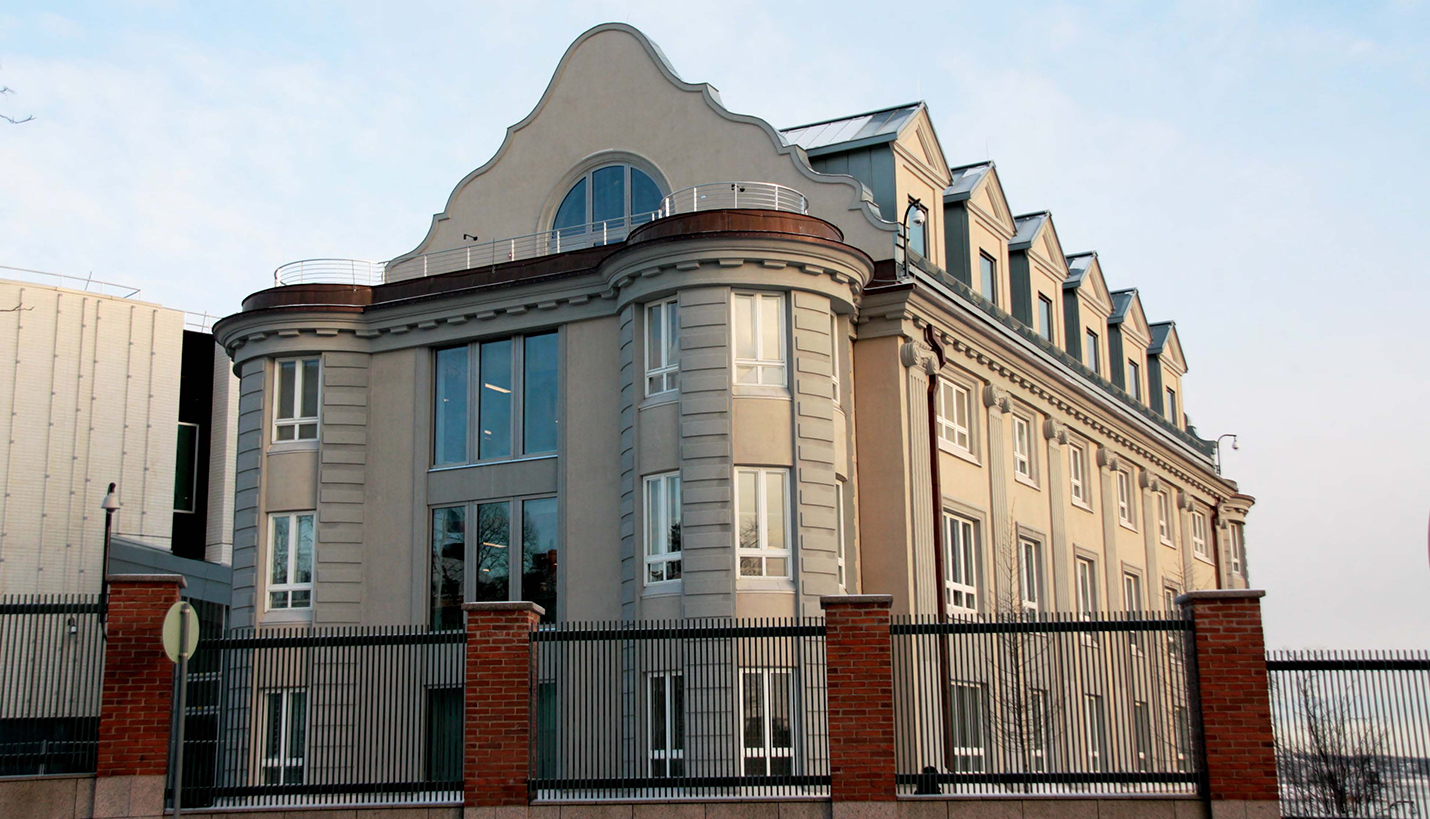Page Project Achieves LEED Platinum Certification
The renovation of an early 20th century building in Helsinki, Finland, is the most recent Page project to achieve LEED Platinum certification – and the very first U.S. Embassy building ever to achieve the Platinum level.
The Innovation Center is a newly rehabilitated office building located on the historic campus of the U.S. Embassy to Finland. Built in 1915 as an apartment building, but later converted to an office building, the 27,592-square-foot facility was, by 2010, in dire need of life safety, accessibility and security upgrades.
Through the initiatives of the U.S. Department of State Bureau of Overseas Buildings Operations (OBO), Ambassador Bruce J. Oreck and his embassy staff, the necessity to renovate the building provided an opportunity to showcase advanced sustainable design technologies and practices, while also demonstrating how “green” building can translate into long-term economic benefits.
“As U.S. Ambassador to Finland, one of my primary goals was to demonstrate the best in American technology with regard to the upgrade of our diplomatic facilities,” said Bruce J. Oreck, U.S. Ambassador to Finland. “The successful transformation of a 100-year-old building into the state-of-the-art Innovation Center, on a site prominently situated on the Gulf of Finland, is a testament to the U.S. Government’s commitment to energy efficient facilities outside our borders. The Innovation Center exclusively showcases Department of Energy Next Generation Luminaire LED fixtures, with the entire building using LED technology. In close collaboration with our Finnish partners, we have also leveraged renewable energy sources for conditioning the interior spaces. As the first LEED Platinum U.S. embassy building, we now have a tangible example of how facilities can be efficiently developed as solid platforms for eco-diplomacy in the 21st century.”
This five-story building, which houses the public offices of the Embassy, has been transformed into a model of intelligent energy management and efficiency. Without jeopardizing the historic character of the original building, the Innovation Center renovation strikes a balance of new functionality with sustainable responses to energy, natural resources and materials. Among the key elements of the sustainable design strategy for the Innovation Center are:
- Large high performance windows increase energy efficiency by utilization of natural ventilation and natural daylighting.
- Integration of indigenous plants into the landscape eliminates the need for a permanent irrigation system, which in turn reduces water consumption.
- Not demolishing and rebuilding the Innovation Center, which maintained 64% of the original structure, offset enough embodied energy to equate to 992,365 litres of petrol (262,155 gallons of gasoline).
- One hundred percent of the Innovation Center’s roofs have a solar reflective index (SRI) of 55 or better.
- The majority of energy savings can be attributed to space heating, high efficiency luminaires, natural ventilation and high efficiency fans. Hot water for heating and chilled water for cooling is supplied by the thermal district energy system (DES).
- The light fixtures for the interior of the Innovation Center are all Next Generation Luminaire (NGL) Solid State Lighting (SSL) winners. The lighting system controls light levels with occupancy sensors, dimming panels, daylight sensors and/or 4-button wall stations on a space-by-space basis.
Page was the Designer of Record for Architecture and Interior Design for the entire design-build embassy project, in partnership with contractor B.L. Harbert, International, LLC. Moore Ruble Yudell Architects & Planners are OBO’s concept architects.
03/07/2014
People
Related Posts
- Setting new standards in embassy design
- US Department of State Announces Dedication of Helsinki Embassy Campus Renovation
- OBO Announces LEED Platinum Certification for Major Renovation in Finland
- American 'Innovation Center' A Model For Green Technology And Diplomacy
- Case Study: Creating an Energy Efficient, Intelligent Building in Finland
- Congratulations to 2019 Newly Licensed Professionals
- Evolving Our Building Sciences Practice












